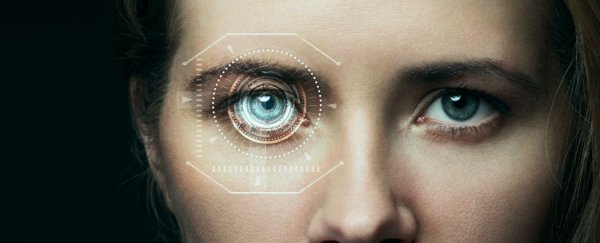It's getting harder and harder to get away from the cameras these days, and now a new type of facial recognition system goes further than most: it uses infrared scanning technology to match the thermal heat signature of a person's with a standard photograph of it. In other words, you can now be seen in the dark.
What makes this invention so interesting is that there's very little correlation between how you appear in the daylight and how you appear on an infrared camera. And if you've been running or have a fever, your face's infrared map is going to look different as well. All of this makes it a very tricky problem to solve.
Researchers from the Karlsruhe Institute of Technology in Germany overcame this by teaching a deep neural network (DNN) to do all of the heavy lifting. These sophisticated computer programs are designed to mimic the human brain, making connections between data sets that take up a lot of processing power and time. Provided there's enough raw data to work with, DNNs can be incredibly effective at spotting patterns and connections that are very complex in nature.
The system had to be fed with many different sample images: people in different lighting, pulling different facial expressions, at different times of the day. With enough pictures to refer to, the neural network could accurately spot a face 80 percent of the time, and in just 35 milliseconds. That's not bad from a low-resolution infrared image.
Neural networks like this are becoming increasingly sophisticated thanks to a better understanding of how to create and refine these systems, plus there's an exponential growth in the amount of data scientists have access to. Processing power is increasing and becoming cheaper, which basically results in more calculations in a shorter time.
The researchers are quite open about how they see this technology being used: to catch crooks. "There does not exist a reliable solution for matching thermal faces, acquired covertly… against the stored visible database such as police mugshots," they explain in a paper published in Proceedings British Machine Vision Conference. "This poses a significant research gap for such applications in aiding the law enforcement agencies."
Once the technology has been developed and refined, it could help spot criminals in the dark, whether driving past a speed camera or scurrying through a building at night - though there are the obvious privacy implications too. Like many emerging technologies, there's a balance to be struck between keeping us safe without having our every move logged and recorded.
